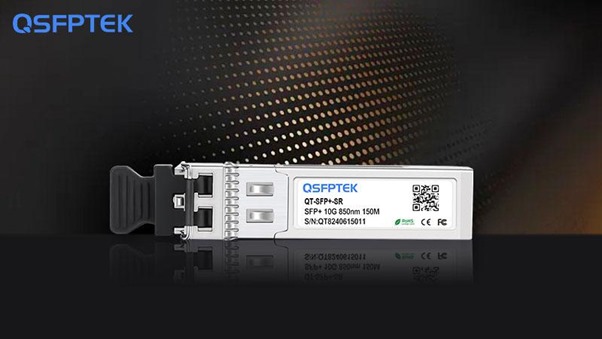As the world moves towards more sustainable practices, the technology industry is playing a crucial role in reducing energy consumption and minimizing environmental impact. Networking infrastructure, a key component of the digital economy, is no exception. As demand for higher speeds and greater bandwidth continues to grow, energy efficiency becomes an essential consideration in the design of networking solutions. In this context, 10G modules are emerging as an important part of sustainable networking, offering high performance while contributing to lower energy consumption and a more eco-friendly infrastructure. In this article, we’ll explore how 10G modules help improve network energy efficiency and support more sustainable networking environments.
Energy Efficiency in Networking
Networking equipment, including switches, routers, and transceivers, can be significant consumers of energy, especially in large-scale data centers and enterprise networks. As bandwidth requirements increase, network operators face the challenge of upgrading infrastructure while maintaining a balance between performance and energy efficiency. Network energy consumption not only affects operational costs but also has a direct impact on the environment. Reducing the energy footprint of networking equipment is therefore crucial in building sustainable, scalable, and eco-friendly networks.
How 10G Modules Help Achieve Energy Efficiency
10G modules, which are commonly used for high-speed data transmission in modern networks, play a key role in achieving energy efficiency. These modules, such as 10G SFP+ and 10G AOC (Active Optical Cables), are designed with low power consumption in mind while still delivering high performance. Let’s explore how 10G modules contribute to energy savings:
Low Power Consumption: One of the most significant advantages of 10G modules is their relatively low power consumption compared to older technologies. These modules are engineered to provide high-speed data transmission (up to 10 Gbps) with minimal power usage, making them an energy-efficient solution for modern networks. For example, 10G SFP+ modules typically consume between 1 to 2 watts of power, a considerable reduction compared to earlier fiber optic transceivers, which could consume more energy for similar performance.
Optimized Design for Efficiency: 10G modules are designed with advanced technologies that optimize power usage while maintaining high levels of reliability and performance. For instance, many 10G transceivers use advanced semiconductor materials and energy-efficient chipsets, which reduce the power required for signal processing and data transmission. The optimized design not only ensures that data is transferred at high speeds but also minimizes heat generation, further contributing to overall energy savings.
Longer Lifespan and Durability: In addition to low power consumption, 10G modules are designed for durability and a long operational lifespan. These modules have high-quality components that resist wear and tear, meaning they can operate effectively for extended periods without needing replacement. This reduces the need for frequent hardware upgrades, which can be resource-intensive and wasteful. By reducing the frequency of replacement and minimizing downtime, 10G modules contribute to a more sustainable network infrastructure.
Compatibility with Existing Infrastructure: 10G modules are compatible with a wide range of existing networking equipment, including switches, routers, and servers. This compatibility allows businesses to upgrade their networks without needing to completely overhaul their infrastructure. As a result, companies can avoid the waste and energy consumption associated with extensive hardware replacements, making the transition to more energy-efficient networking solutions more economical and environmentally friendly.
Reduced Cooling Requirements: The low power consumption and efficient operation of 10G modules also lead to a reduction in the need for cooling systems. As networking equipment consumes less power and generates less heat, data centers and network facilities require less energy for cooling, which accounts for a significant portion of a data center’s energy usage. By lowering the demand for cooling, 10G modules help reduce the overall energy footprint of a network infrastructure.
The Role of 10G Modules in Sustainable Data Centers
Data centers are among the largest consumers of energy in the digital world, with network equipment, servers, and cooling systems consuming vast amounts of power. As companies look to reduce their environmental impact, implementing energy-efficient technologies like 10G transceivers can make a significant difference. By adopting these energy-efficient modules, data centers can provide high-performance connectivity without unnecessarily increasing their energy consumption.
In addition to energy savings, the use of 10G modules in data centers also supports initiatives to minimize e-waste. By prolonging the life of networking equipment and reducing the need for constant upgrades, these modules help reduce the turnover of electronic devices, ultimately contributing to lower levels of electronic waste.
Conclusion
In a world increasingly focused on sustainability, the role of 10G modules in energy-efficient networking cannot be overstated. With their low power consumption, optimized design, and extended lifespan, 10G modules are helping build more sustainable, eco-friendly network infrastructures. By supporting high-speed data transmission without compromising on energy efficiency, 10G modules contribute to reducing operational costs and minimizing the environmental impact of networking equipment. As the demand for faster and more reliable networks continues to grow, adopting energy-efficient solutions like 10G modules will play a crucial role in the future of sustainable networking.

